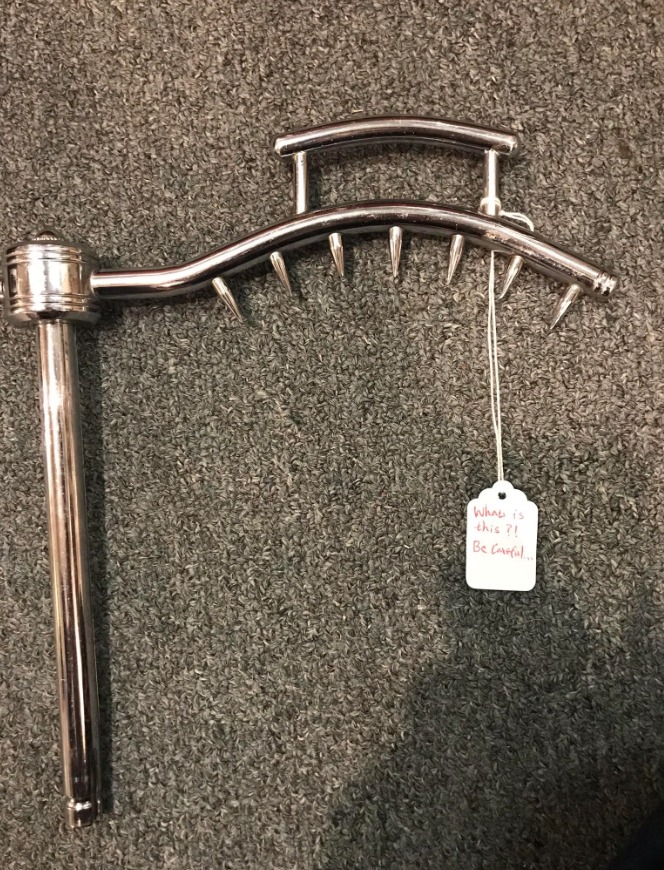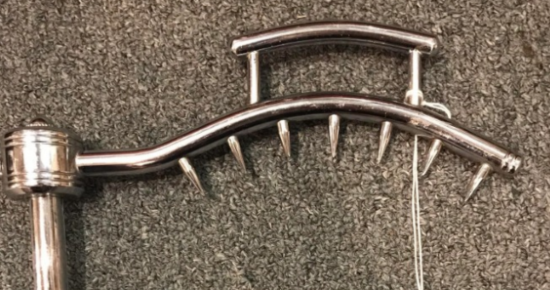Uncovering the Historic Mystery of an Antique Culinary Tool
Embarking on an antique store adventure often feels like stepping into a time capsule, where each discovery holds the promise of unraveling a hidden story. Recently, patrons and staff of a Maryland antique store stumbled upon a peculiar metal object that ignited a wave of curiosity and speculation. Adorned with a tag pleading, “What is this!?”, this enigmatic find sparked a captivating journey of discovery.
The Mystery Unfolds
At first glance, the metal contraption appeared baffling, its purpose obscured by its sharp metal spikes arranged in an intriguing pattern. Without the context of its missing companion, a cutting board, the object’s intended use remained a puzzle. Even the seasoned staff of the antique store found themselves scratching their heads in bewilderment.

A Community Comes Together
Enter the power of online communities, where knowledge converges to illuminate the shadows of the past. With the assistance of a dedicated community on Reddit, the mystery was unraveled. The object was identified as a roast or ham holder, designed to be affixed to a cutting board—a missing piece that added to the intrigue.
A Glimpse into Culinary History
The revelation of the object’s purpose offered a glimpse into a bygone era of culinary craftsmanship. These holders, crafted with precision and practicality, spoke of a time when culinary tools were not merely functional but also symbols of artistry and ingenuity. Anchoring large cuts of meat securely to a cutting board, they facilitated the carving process, adding an element of finesse to dining occasions.
A Tribute to Antique Shopping
Beyond the thrill of discovery, the tale of the roast or ham holder celebrates the timeless allure of antique shopping. Each item holds a narrative, waiting to be unearthed by eager explorers. Through these artifacts, we gain insight into the daily rituals and customs of bygone eras, connecting us to the past in a tangible way.
The Legacy of Kitchen Innovations
Moreover, the journey of the metal spiked object sheds light on the evolution of kitchen innovations. It serves as a testament to the ever-changing landscape of cooking practices, reflecting shifts in technology and lifestyle throughout history.
In essence, the discovery of the roast or ham holder transcends mere curiosity, offering a profound reflection on the interconnectedness of past and present. It underscores the value of community knowledge in unraveling historical mysteries and celebrates the enduring quest for understanding the artifacts that shape our collective heritage.
